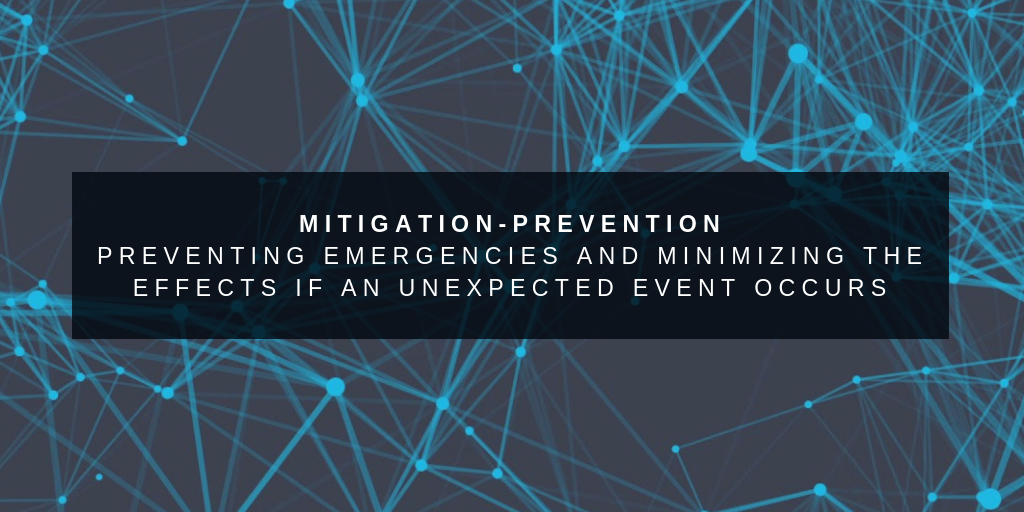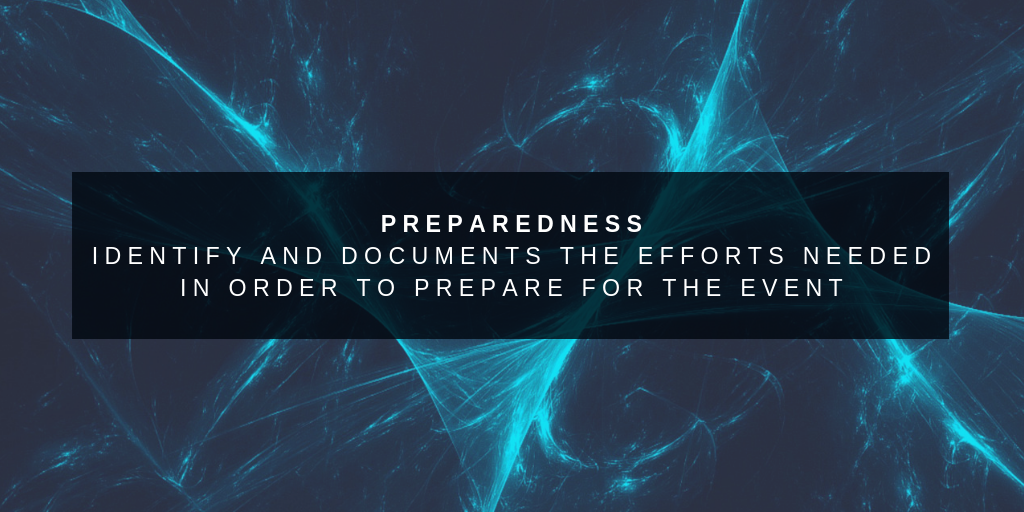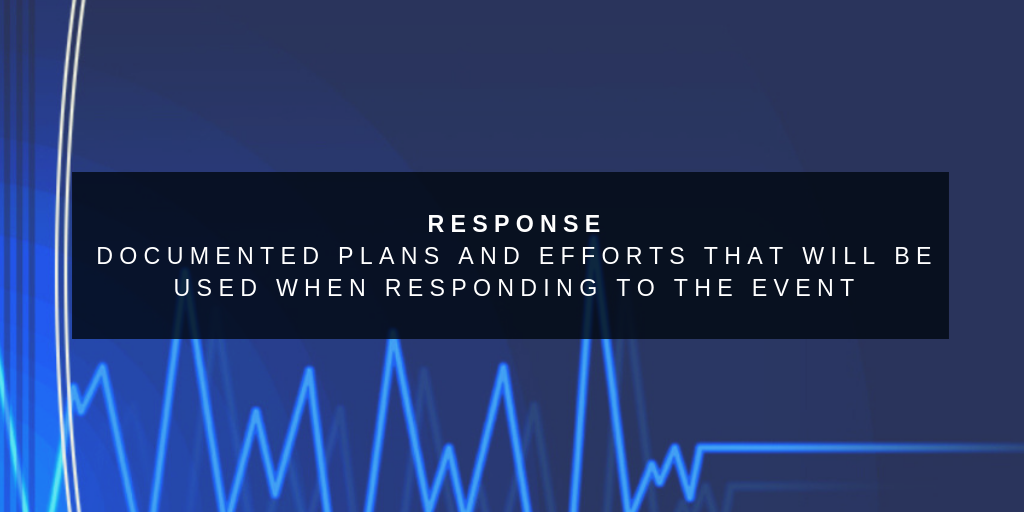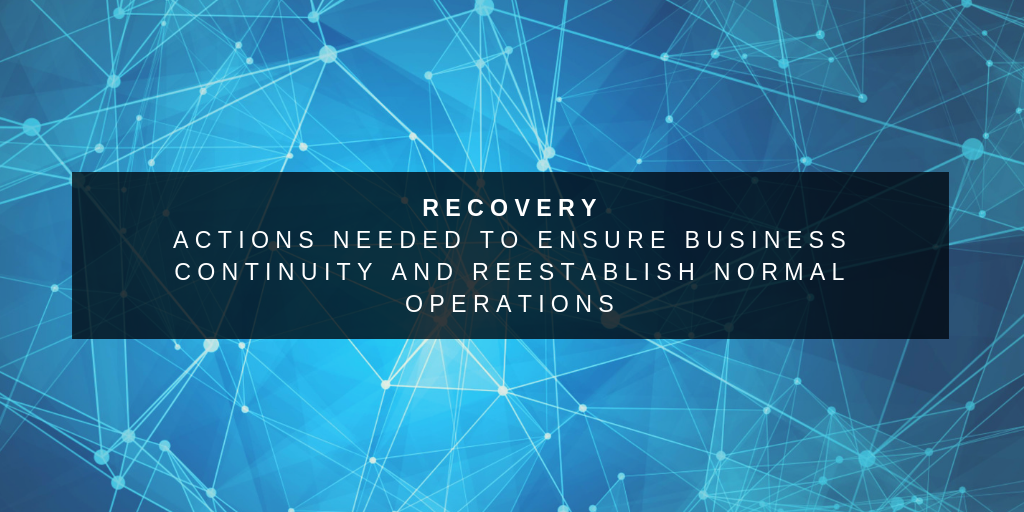Facility managers must have emergency response management plans to ensure the safety of their employees, visitors, and physical assets. Such plans help mitigate the impact of unforeseen events such as natural disasters, accidents, or security breaches. They are designed to guide and direct employees during emergencies and outline the procedures for responding to threats. Read on to discover how to create an emergency response management plan.
What Facilities Managers Should Focus on When Developing Emergency Preparedness Plans
In this blog, we discuss Emergency Response Management Systems and the 4 phases of emergency management to consider when developing an Emergency Response Management (ERM) Program and preparing the Facilities Management department and the organization for unexpected events.
Schedule a Demo with Intellis to see our powerful tools in action.
These phases are highly interconnected, and each phase has an impact on the others. As a whole, the ERM cycle is a dynamic and ongoing process that requires continuous review.
- Prevention-Mitigation
- Preparedness
- Response
- Recovery
What is Emergency Response Management?
ERM, or Emergency Response Management, typically comprises a set of documented procedures that outline how the FM team should respond in various situations. In general, a plan will include checklists for categorizing potential emergencies, identifying and determining how resources will be used, and establishing training that provides for preparing, rehearsing, and testing these plans.
Mitigation-Prevention
Prevention and Mitigation are the first phase in emergency management. Prevention is the action taken to decrease the likelihood of an event or crisis. Mitigation is the action taken to eliminate or reduce the loss of life and physical asset damage related to an event or situation, particularly those that cannot be prevented.

Hazard identification and risk assessment can help define the hazards the FM department should seek to prevent, diminish, or mitigate more specifically. A risk assessment is a process that enables facility managers to gain a more thorough understanding of potential threats, the current level of preparedness, and the necessary improvements.
Please read our blog about climate resilience and healthcare facilities management.
Three essential elements make up the basis of an emergency response plan. These evaluations can be conducted using various methods, including research, surveys, and testing stages. There are three primary reasons to carry out a comprehensive risk evaluation:
- Evaluate any possible threats and dangers.
- Identify flaws and any ramifications of those threats.
- Document and report the risk assessment findings and provide suggestions for next steps.
After identifying potential risk scenarios during the Mitigation-Prevention phase and conducting and evaluating the risk assessment, FM teams can develop a comprehensive emergency response plan to address these potential hazards and risks.
Preparedness
Preparedness refers to plans or procedures to minimize damage to physical assets and save lives during an emergency. Planning and training are the essential elements of the preparedness phase. These methods ensure your organization's emergency personnel and FM teams can best respond to a disaster.

The Preparedness phase is designed to develop and test strategies, processes, and protocols that prepare the organization for potential emergencies. Preparedness activities include:
-
Establish an incident command system consistent with the National Incident Management System (NIMS) to organize your organization's personnel and services to respond in tandem during an emergency.
-
Develop all hazard policies, procedures, and protocols in collaboration with key stakeholders outside your organization, such as law enforcement, medical services, public health, and fire services.
-
Negotiate contracts to provide your organization with essential resources such as food, transportation, medical services, and volunteers.
-
Assign personnel to manage each function of the incident command system and define lines of succession in the emergency plan regarding who is responsible if critical leaders are unavailable.
Response
The response phase refers to the plans and efforts to respond safely to the event. Emergency response plans should be collaborative ideas developed by individuals or groups. Assembling a team of subject matter experts from various departments helps determine the plan's overall scope.

Clear communication is crucial in every emergency. This will enable those at the top of the chain of command to communicate with everyone in the facility regarding the situation and the appropriate action to take.
Please read our blog about climate resilience and healthcare facilities management.
Further, the response plan should be reviewed annually, and the FM team should inform building users about what to expect.
Recovery
Recovery is generally an ongoing process. The type and breadth of recovery activities will vary depending on the nature and scope of the emergency.

However, the goal of the recovery phase is to restore and reestablish normal operations, ensuring business continuity. Essential areas to consider include:
-
Determine critical personnel leadership as well as an order of succession
-
Identify your organization's most vital services and technologies to ensure business continuity.
-
Define and document essential service continuity strategies for common disruptions.
Emergency Response Management
When considering these four phases for developing an Emergency Response Management (ERM) Program and preparing the Facilities Management (FM) department and the organization for unexpected events, your FM team will be well on its way to ensuring the organization's safety.
Read about Notre Dame in Paris and emergency preparedness plans.
From routine issues to significant crises, the unexpected happens occasionally. Occasionally, a minor repair is needed on a machine or system that can wait until the next day. However, at other times, an emergency such as a natural disaster can become a threat within hours, putting your facilities, physical assets, and occupants in immediate danger.
Having updated, easily accessible information is essential to successfully managing an emergency. Utilizing a safety solution that provides instant access to crucial information, such as safety manuals and protocols, can enable your organization to respond quickly and maintain business continuity even in the face of an emergency.
---
Emergency Response Management is a crucial aspect of any disaster management plan. Whether it's a natural calamity, a terrorist attack, or a public health emergency, having an effective emergency response plan can save lives and minimize damage.
At its core, Emergency Response Management is about ensuring the safety of people and property during a crisis. This blog will examine the key components of an emergency response plan, the steps involved in developing one, and the best practices for its implementation. Read on to learn how to prepare yourself and your organization for emergencies.
Additional Resources
- Climate Resilience: What should Facility Managers and Capital Planners do to prepare for climate change?
- How the fire at Notre Dame in Paris highlights the importance of emergency preparedness plans.
- How to create an emergency response management plan.


